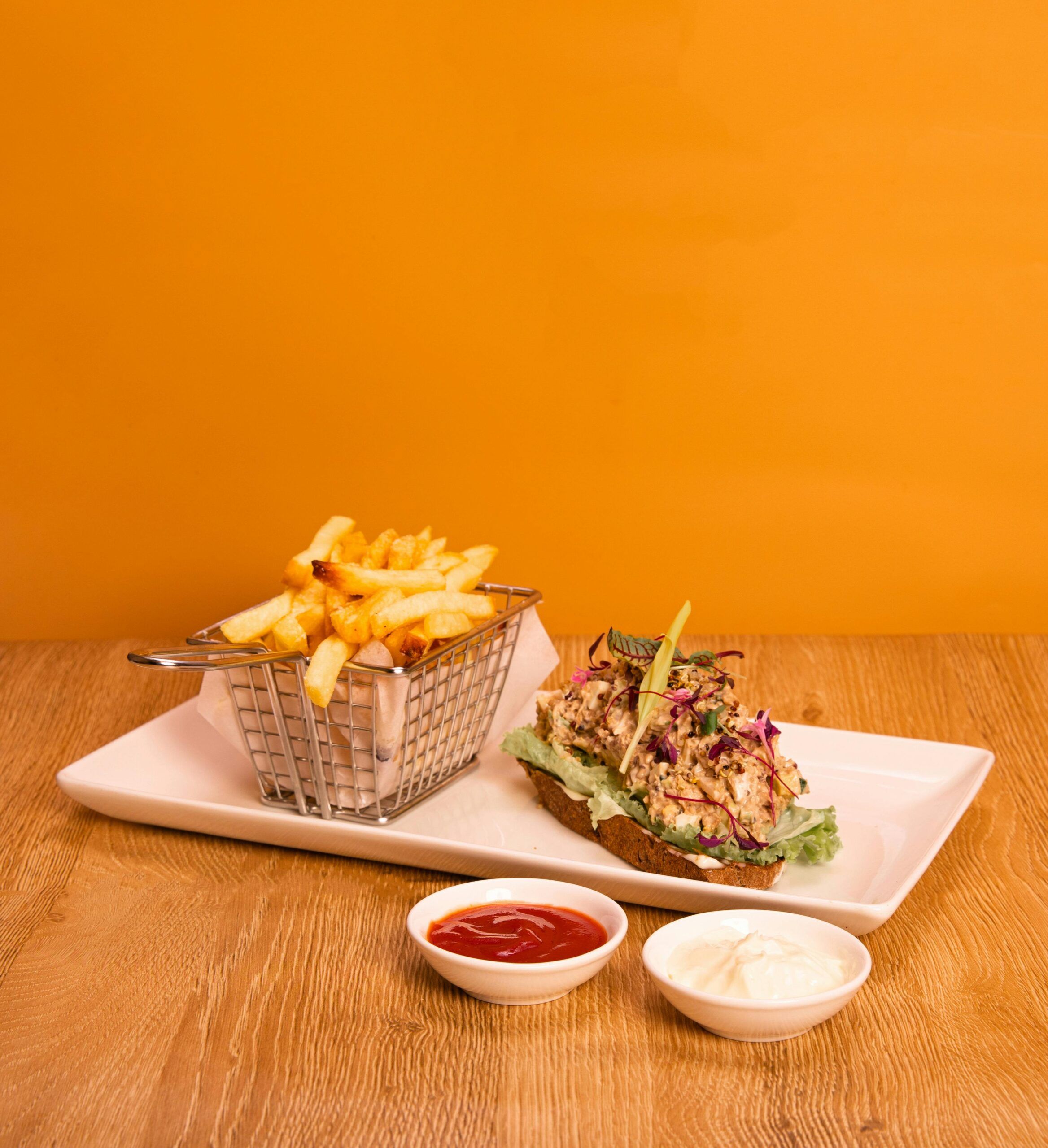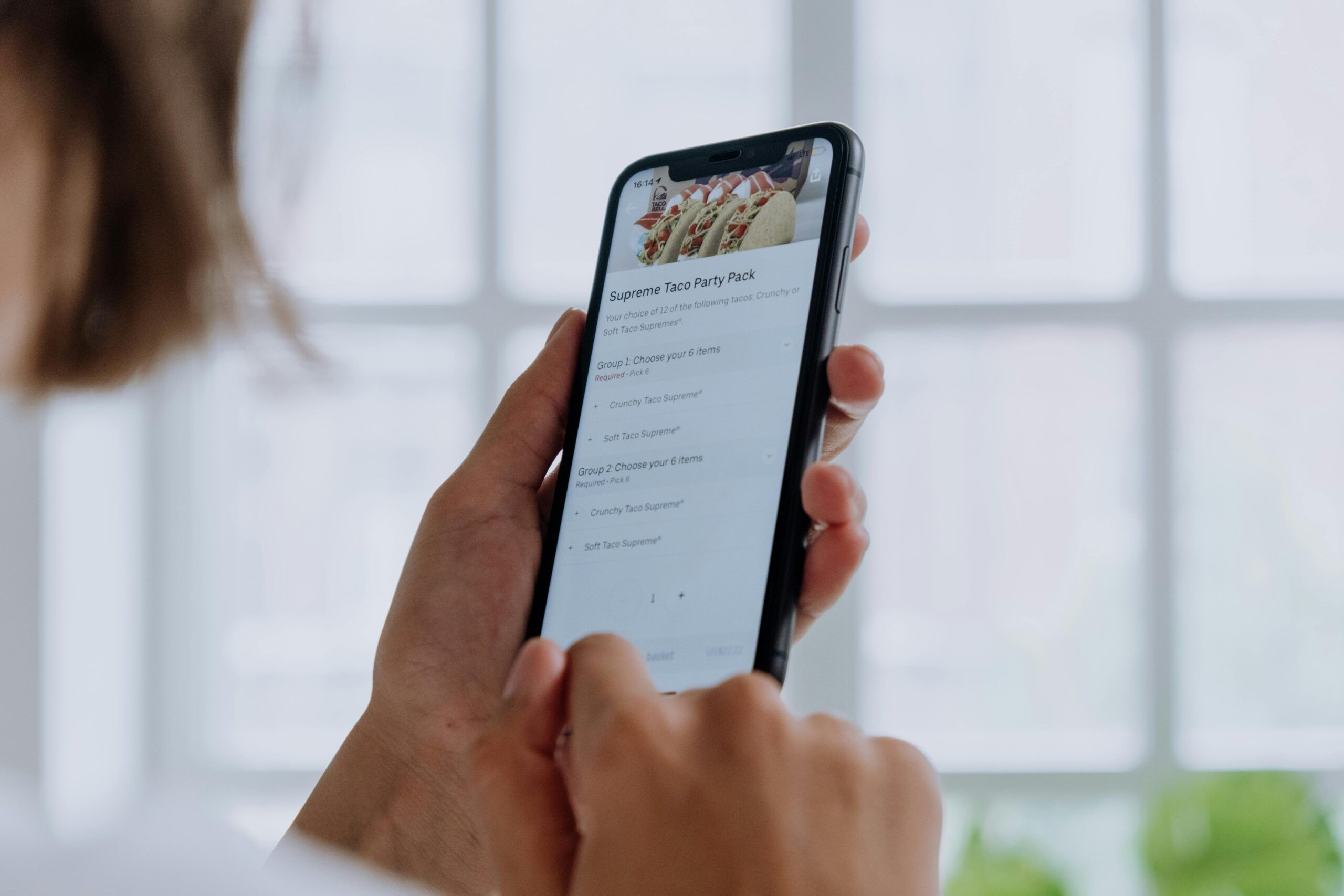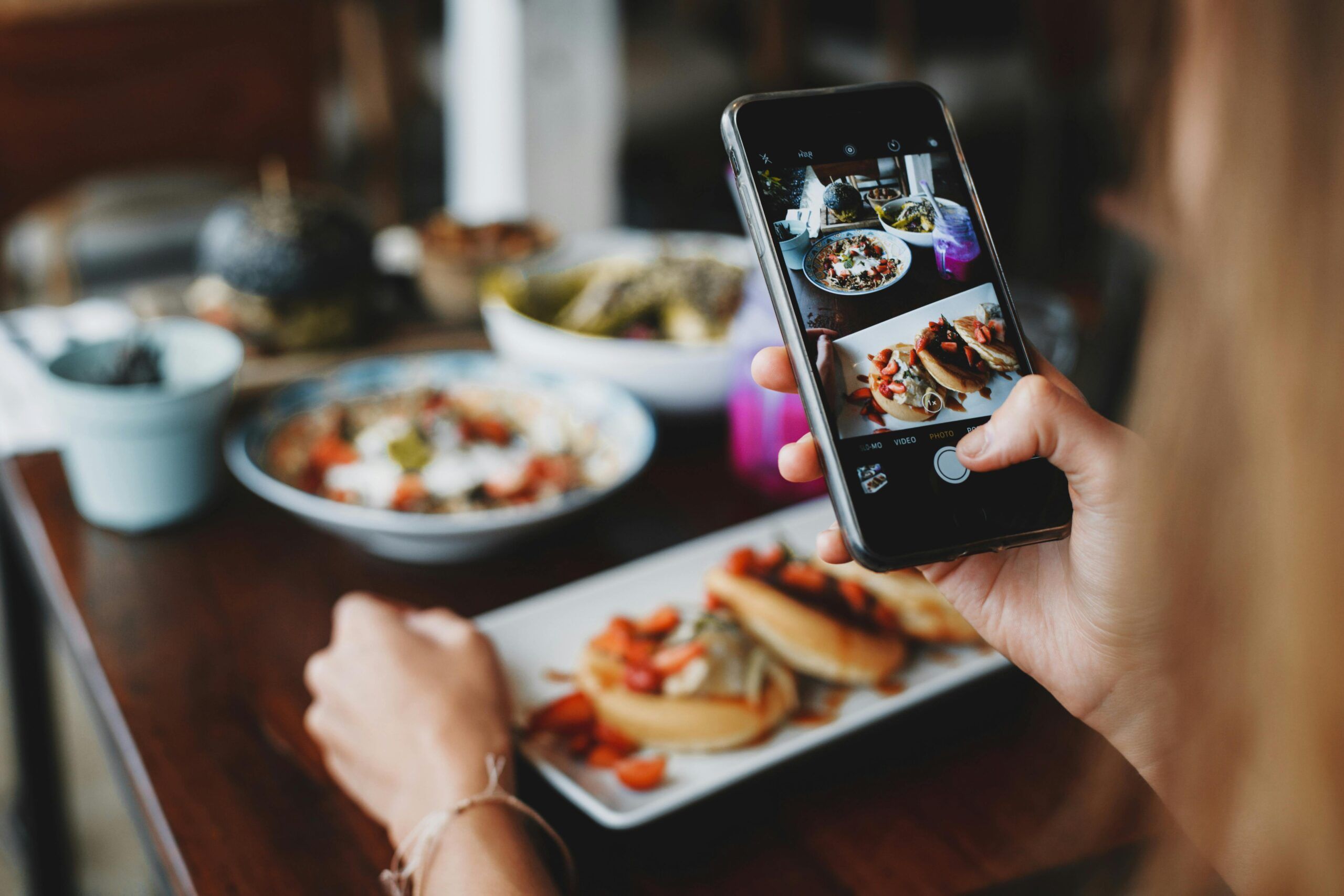- From Punch Cards To Personalization: How Restaurant Loyalty Has Evolved
- Why Loyalty Programs Work: Psychology Meets Profitability
- Types Of Restaurant Loyalty Programs (And Which Fit Your Brand Best)
- The 3 Levels Of Modern Loyalty (With Examples)
- Common Loyalty Program Mistakes (And How To Avoid Them)
- Measuring Success: What Metrics Matter
- How To Launch A Loyalty Program With Orders.co In 5 Simple Steps
- The Future Is Loyal: Why Acting Now Gives You The Edge?
- FAQ
Customer loyalty is becoming one of the most important factors in restaurant success.
In a competitive market, it’s not just about getting new customers in the door—it’s about giving them a reason to return.
Today’s diners have more choices than ever, both in-person and online. But one thing stands out: 41% of consumers say loyalty programs are the top reason they’d return to a restaurant over other ordering features.
That clearly signifies that loyalty has moved from a nice-to-have to a must-have.
The good news is, building a loyalty program doesn’t require big budgets or complex systems. With the right setup, independent restaurants can reward their regulars, increase repeat visits, and keep more of their revenue.
In this article, we’ll walk through why loyalty programs matter, how they’ve evolved, and what types of programs actually work. If you’re looking for practical ideas to grow your restaurant’s repeat business, you’re in the right place.
Key Takeaways
- Customer loyalty programs for restaurants help drive repeat business and increase revenue.
- Modern loyalty programs are easy to manage, even for small independent restaurants.
- Points-based systems are the most flexible and effective loyalty model for most restaurants.
- The best programs are simple, visible, and connected to your ordering platform.
- Using data from your loyalty program can help you make smarter business decisions.
- Orders.co offers built-in tools to launch, manage, and track loyalty rewards without added complexity.
From Punch Cards To Personalization: How Restaurant Loyalty Has Evolved
Not long ago, loyalty programs were simple. You handed out a punch card, and after ten visits, your customer got a free meal or drink. It worked, but it had limits—mainly, you had no way to know who was coming back or what they liked to order.
Today, loyalty programs are smarter and more flexible. Restaurants can now track visits, spending habits, and order preferences—all in one place.
Whether your customer orders at the counter or through your online menu, you can reward them automatically without slowing down your service.
As customer habits continue to shift toward digital ordering and personalized experiences, the loyalty programs that perform best are the ones that feel relevant and easy to use.
That’s why it’s important to move past one-size-fits-all rewards and start building something that fits your restaurant’s service style and customer base.
Also, read:
- 10 Loyalty Program Ideas For Restaurants
- Mastering The Strategy: Restaurant Email Marketing Automation For Enhancing Customer Loyalty
- Elevate The Dining Experience: Introducing The Ultimate Dining Rewards Program
- Quick And Easy Loyalty Program Software Integrations For Your Restaurant To Strengthen Brand Loyalty
Why Loyalty Programs Work: Psychology Meets Profitability
Loyalty programs aren’t just about handing out free food—they’re based on a clear set of behaviors that drive more consistent business.
When structured the right way, they encourage people to spend more, come back more often, and feel more connected to your brand.
Source: Deloitte
Here’s what makes them so effective:
- People like seeing progress. When customers can see how close they are to a reward—whether it’s through a progress bar, points balance, or recent activity—they’re more likely to keep ordering to “complete the goal.”
- Small rewards create big habits. A free side or dessert doesn’t cost much, but it can keep a customer coming back regularly. That repeat business adds up over time.
- Personal rewards feel more valuable. When the reward reflects what a customer usually orders, it feels thoughtful—even if it’s something small. That personal touch can increase loyalty.
- Familiarity builds trust. The more often someone visits your restaurant, the more likely they are to recommend it to others. A loyalty program helps turn occasional guests into regulars.
And there’s financial data to back it up. Customers who are part of a loyalty program tend to:
- Spend more per visit
- Order more frequently
- Be more likely to order online directly from the restaurant
These aren’t one-time boosts—they create steady, reliable revenue.
That’s why more independent restaurants are making customer loyalty programs for restaurants a part of their long-term growth strategy.
Types Of Restaurant Loyalty Programs (And Which Fit Your Brand Best)
Not every restaurant needs the same type of loyalty program. What works for a neighborhood cafe might not be right for a high-volume takeout spot. The good news is, there are a few proven formats—and you can pick one that fits how your restaurant already operates.
Here are the most common types of customer loyalty programs for restaurants, along with who they work best for:
1. Points-Based Programs
Customers earn points for every dollar they spend, then redeem them for rewards like free food or discounts.
- Best for: Quick-service, fast-casual, and delivery-heavy restaurants
- Why it works: Easy to understand and easy to scale
- Example reward: 10 points per $1 spent; 200 points = free item
2. Tiered Programs
Guests unlock new levels of rewards as they spend more or visit more often. Higher tiers come with better perks.
- Best for: Restaurants with strong brand loyalty and frequent repeat customers
- Why it works: Encourages continued engagement and larger purchases
- Example reward: Bronze, Silver, Gold tiers with increasing perks
3. Visit-Based Programs
Rewards are based on the number of visits, not spending. After a certain number of visits, the customer earns a free item.
- Best for: Coffee shops, bakeries, lunch spots, or local diners
- Why it works: Keeps people coming in consistently
- Example reward: Free coffee after 10 visits
4. Subscription-Based Programs
Customers pay a monthly fee for access to ongoing perks, like daily drink deals or free delivery.
- Best for: Restaurants with high-volume regulars or online ordering
- Why it works: Creates predictable revenue and stronger brand loyalty
- Example reward: Free coffee or delivery for $10/month
5. Gamified Programs
Adds a fun, interactive element to loyalty—like challenges, digital punch cards, or spin-to-win rewards.
- Best for: Restaurants targeting younger guests or looking to build excitement
- Why it works: Increases app engagement and social sharing
- Example reward: Bonus item for completing a weekly challenge
Choosing the right type of program depends on your average order size, customer frequency, and whether most of your orders happen in person or online. Whichever structure you choose, the goal stays the same: give people a reason to return.
The 3 Levels Of Modern Loyalty (With Examples)
Not all loyalty programs have the same effect. Some offer basic perks like free items after repeat visits, while others create experiences that make customers feel valued and connected.
As the restaurant industry becomes more competitive, the loyalty programs that make a real impact are the ones that go beyond discounts and create genuine relationships.
1. Transactional Loyalty
Transactional loyalty is the most common and straightforward approach. Customers earn points or rewards based on how much they spend or how often they visit.
It’s the type of program most people recognize—buy ten coffees, get one free. This method is popular because it’s easy to set up and easy for customers to understand.
It creates an incentive to come back, especially when customers know they’re close to a reward.
A well-known example is Domino’s, where customers earn points for every qualifying order and can redeem them for menu items.
It’s simple and consistent, and for many restaurants, it’s an ideal starting point.
Source: qrs magazine
2. Experiential Loyalty
Experiential loyalty programs take things a step further by offering customers something beyond discounts—unique experiences or special access.
This could include early access to new menu items, app-only deals, or bonus points during slower hours. The goal is to make the customer feel like they’re getting something exclusive that others aren’t.
Chipotle does this well with interactive app-based challenges and seasonal games that reward customers with extra points or surprise treats.
This type of loyalty is especially useful for encouraging more engagement with your mobile app or website, and it helps regular customers feel more involved with your brand.
Source: Insight Trends World
3. Emotional Loyalty
Emotional loyalty is the most meaningful and the hardest to achieve. It happens when customers feel personally connected to your restaurant—not just because of the food, but because of the values, service, or experience you offer.
Restaurants build emotional loyalty by creating moments that feel personal, such as offering rewards tied to customer preferences, celebrating milestones, or supporting causes that matter to your community.
Costa Coffee, for example, gives bonus points to customers who bring reusable cups, reinforcing their shared commitment to sustainability.
Emotional loyalty leads to customers who return often and recommend your restaurant to others. It creates long-term value that goes well beyond points and discounts.
Source: Glitz By Beauty Insider
Common Loyalty Program Mistakes (And How To Avoid Them)
Loyalty programs can bring real value to your restaurant—but only if they’re built with the right approach.
Many programs fall short not because the idea is flawed, but because of how they’re executed. Below are some of the most common mistakes restaurant owners make, and how to avoid them.
Making it too complicated
If your customers need a rulebook to understand your loyalty program, it’s not going to work. Keep the structure clear and simple.
If you’re using points, make sure customers can easily track their balance and know what rewards are available. A confusing program can discourage people from signing up—or using it.
Offering rewards that eat into your margins
Free meals or large discounts might seem generous, but they can hurt your bottom line if not planned carefully.
The best restaurant loyalty programs use low-cost, high-value rewards, like a drink, dessert, or side that pairs well with a main item. These types of rewards keep customers happy without cutting into your profits.
Not promoting the program
Even the best loyalty rewards program for restaurants won’t work if customers don’t know about it.
Make sure your program is mentioned on your website, menu, receipts, and in-store signage. Train your staff to invite guests to join. And don’t forget to promote it through your email and text marketing channels.
Ignoring customer data
One of the biggest benefits of a digital loyalty program is the data it gives you. If you’re not reviewing which rewards are being used, who your most frequent guests are, or when people tend to stop ordering, you’re missing out.
Use this information to adjust your program, improve your offers, and better serve your regulars.
Not linking it with your ordering system
Loyalty works best when it’s integrated into how people already interact with your restaurant.
Whether customers order online, through your app, or at the counter, they should be able to earn and redeem rewards without extra steps. A disconnected experience can lead to frustration and missed opportunities.
Tip: If you’re looking for a loyalty system that does all of this without extra setup or added stress, Orders.co’s loyalty rewards feature is designed to work with your online ordering and POS, track customer habits, and send automated offers based on real activity.
👉 Want to see how it fits into your restaurant? Schedule a quick demo.
How To Launch A Loyalty Program With Orders.co In 5 Simple Steps
Creating a loyalty program with Orders.co is quick, easy, and built to work with the way you already run your restaurant.
The system is designed for independent operators who want a no-hassle way to reward customers and bring them back more often—without complicated tools or manual tracking.
Here’s how to get started:
1. Define your loyalty goal
Before setting anything up, decide what you want the program to help with. Do you want to boost return visits? Encourage larger orders?
Drive more direct online sales? Setting a clear goal will help you structure your reward offers and track the right data once the program is live.
2. Set your point rules
Orders.co uses a point-based rewards system that’s flexible and simple for both you and your customers. Inside your dashboard, you’ll decide how many points customers earn per dollar spent and what they can redeem those points for.
You can create rewards tied to low-cost, high-value menu items—like a drink, dessert, or side—to keep your margins healthy.
3. Add loyalty to your website and online ordering
Once the point structure is set, your loyalty program is automatically integrated with your Orders.co online ordering site. No extra setup is needed.
Customers will see how many points they’ve earned and what they can get with them directly through your ordering interface, making it easy to join and stay engaged.
4. Let your customers and team know
Use in-store signage, digital receipts, and your team’s everyday interactions to inform guests about the program.
Orders.co also gives you built-in email and SMS tools, so you can invite your customer list to join and start earning rewards with their next order.
5. Track your results and adjust as needed
As customers use the program, you’ll see detailed reports inside your Orders.co dashboard. You can monitor point redemptions, average ticket size, and repeat order frequency.
If something isn’t performing as expected, you can adjust the program in just a few clicks—no need for tech support.
📲 Want to reward your customers and keep more of your sales?
Schedule a free demo to see how Orders.co’s loyalty system can work for your restaurant.
Measuring Success: What Metrics Matter
A loyalty program should do more than just reward customers—it should help your restaurant grow in ways you can clearly measure.
Tracking the right data points helps you understand what’s working, what’s not, and where to make changes for better results.
Here are the key metrics to keep an eye on:
- Repeat Order Rate: This tells you how often customers are coming back. A strong loyalty program should gradually increase this number as members return to earn and redeem rewards.
- Average Order Value (AOV): Look at whether loyalty members spend more per visit. Small incentives—like earning points for larger orders or bonus items for combos—can encourage customers to add a little extra.
- Redemption Rate: Track how many customers are actually using the rewards they earn. A very low redemption rate might mean the program isn’t clear or the rewards aren’t compelling. Too high, and you may need to adjust your point thresholds or reward mix.
- Enrollment Rate: Measure how many of your regular customers are signing up. If the number seems low, it may be time to improve how you’re promoting the program across channels.
- Loyalty vs. Non-Loyalty Customer Revenue: Compare how much revenue comes from loyalty members versus non-members. This shows whether the program is driving real value and helps you decide how to scale it.
If you’re using a loyalty platform like Orders.co, many of these metrics are tracked for you automatically. You can easily review the data from your dashboard and make informed decisions without adding another task to your plate.
The Future Is Loyal: Why Acting Now Gives You The Edge?
Loyalty programs are no longer something only large chains can afford to implement. They’ve become a practical, everyday tool for independent restaurants that want to keep their best customers and grow their revenue over time.
Today’s diners expect more than just good food—they want to feel valued.
A loyalty program helps you do exactly that by giving people a reason to return, spend more, and stay connected with your restaurant.
And as more customers shift to digital ordering, having a system that rewards those interactions gives you a real advantage.
With AI-powered tools, Orders.co makes it easy to track customer behavior, send timely reward reminders, and even automate marketing offers based on order history—so your program runs in the background while you focus on running your kitchen.
Here are just some of the tools built into the Orders.co platform:
Restaurant Online Orders Management
Consolidate all your third-party orders into one device.
You no longer need to juggle multiple tablets—see all incoming orders from Uber Eats, DoorDash, Grubhub, and others in one unified view. It makes staff training easier and your operations more efficient.
Local Business Optimization
Orders.co helps your restaurant appear in over 80 online directories, improving your visibility in local searches. That means more people can find you when they’re hungry and ready to order. Plus, our optimization tools help keep your business information accurate and consistent across the web.
Menu Management
Update pricing, availability, and item descriptions across all platforms in one place. Whether you’re changing a price or removing a sold-out item, it only takes a few clicks. Orders.co’s Master Menu syncs changes to your direct ordering site and all connected delivery apps.
Custom Ordering Website
Create a commission-free direct ordering website that matches your restaurant’s branding. With AI assistance, it can be built in under 30 seconds using your existing menu. This gives customers a direct way to order from you, without the third-party fees.
Guest Feedback Monitoring
Monitor customer reviews from multiple sources and get alerts for low ratings or keywords. This guest feedback monitoring feature helps you address concerns quickly and keep your reputation strong. You’ll also gain insights into what’s working and what needs improvement.
Integrations
Orders.co integrates with 30+ POS systems and all major delivery apps. You can manage everything from a single platform, with real-time updates that sync across your tech stack. This reduces errors and keeps all your systems talking to each other.
Reporting
See sales, order sources, top-performing items, and more—all in one dashboard. You can filter by platform, item, or time period to find what’s driving revenue. Custom reports help you make decisions backed by data, not guesswork.
Dispute Management
When delivery issues happen, Orders.co helps you respond quickly and document disputes with providers. Keep track of all your claims in one place and reduce the time spent chasing down refunds. This dispute management assistant helps protect your revenue and avoid unnecessary losses.
👉 Want to run smarter, not harder? Schedule your demo and get all the tools you need to grow loyalty, orders, and customer satisfaction—without extra effort.
FAQ
1. How long does it take to see results from a restaurant loyalty program?
Most restaurants start noticing changes within the first few weeks—especially in return visit rates and direct online orders. However, the real impact of customer loyalty programs for restaurants tends to build over 1 to 3 months as more customers join and begin redeeming rewards.
2. Can loyalty programs work for restaurants that rely on both dine-in and delivery?
Yes. The best customer loyalty programs for restaurants support multi-channel interactions. Whether your customers order in person, through your website, or via mobile, the system should track their points seamlessly and offer rewards that suit both order types.
3. What’s the biggest mistake restaurants make after launching a loyalty program?
Not promoting it consistently. A loyalty program is only valuable if customers know it exists. Be sure to remind guests at checkout, on receipts, in your emails, and through text messages—especially during the first few months. This is a key part of growing customer loyalty programs for restaurants that actually drive ROI.
4. How do I know if a loyalty program is right for my restaurant size and concept?
If you serve repeat customers, a loyalty program makes sense—regardless of your size. From fast-casual spots to independent pizzerias or cafes, most small restaurants benefit from even a basic system. Many successful customer loyalty programs for restaurants start simple and grow over time.
5. What’s the difference between a generic loyalty platform and one built for restaurants?
Generic platforms often lack industry-specific features like menu syncing, POS integration, or behavior-based rewards. Restaurant-specific systems are designed to handle operational needs like multiple ordering channels, perishable inventory, and dine-in vs. delivery flows. That’s why specialized customer loyalty programs for restaurants tend to perform better and require less manual setup.



